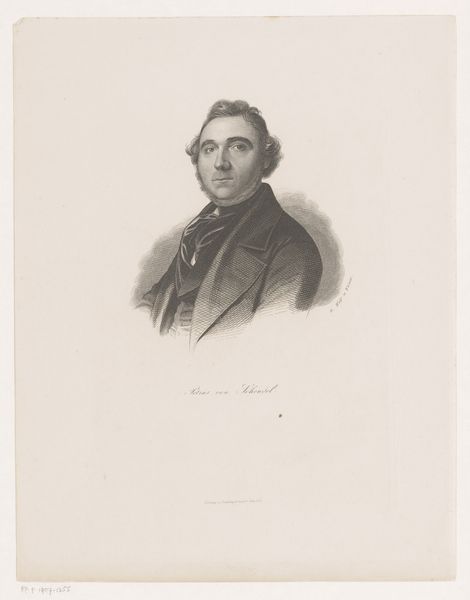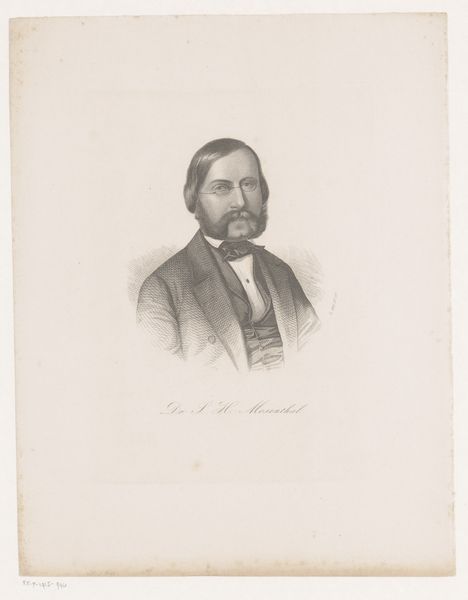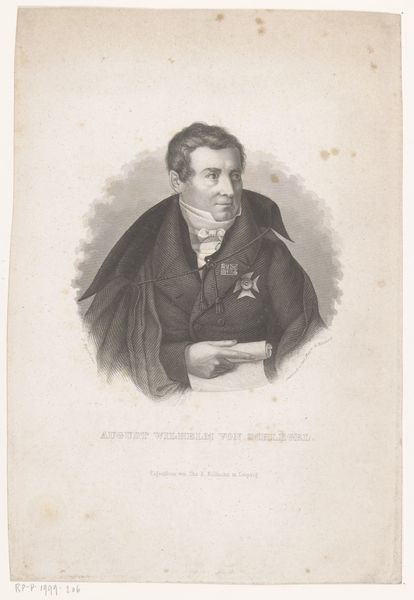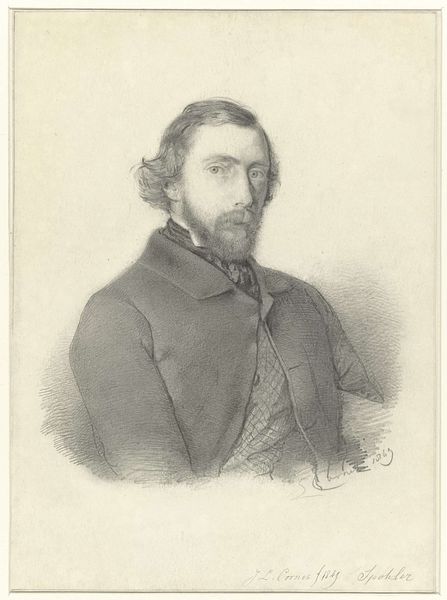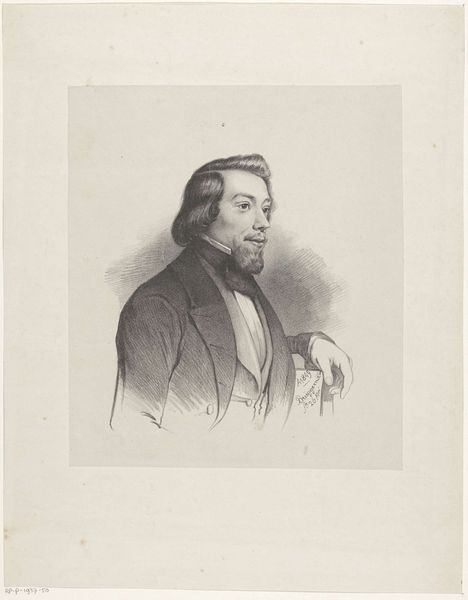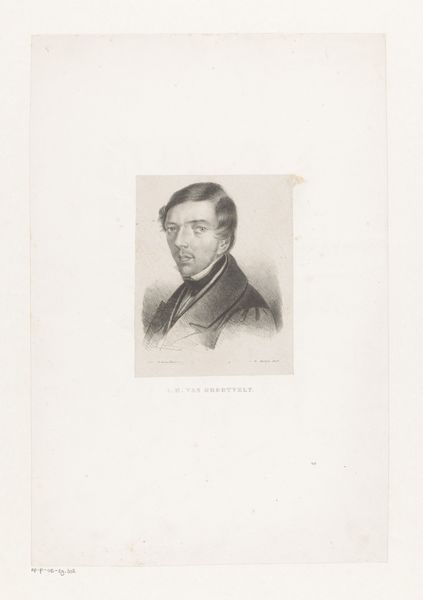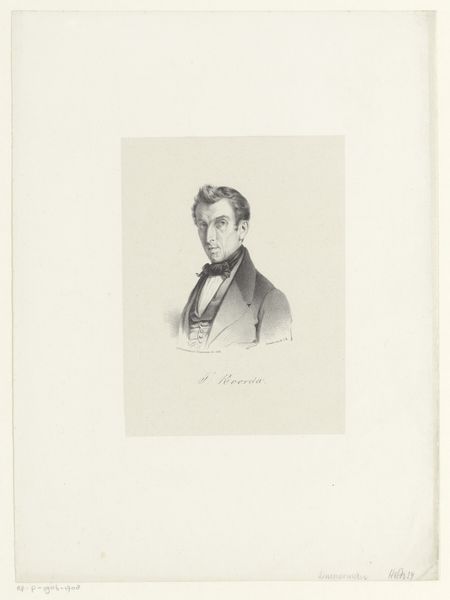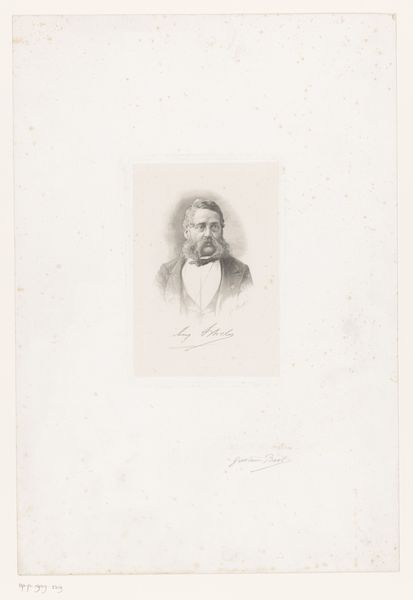
drawing, graphite
#
portrait
#
pencil drawn
#
drawing
#
amateur sketch
#
light pencil work
#
shading to add clarity
#
pencil sketch
#
portrait reference
#
pencil drawing
#
romanticism
#
limited contrast and shading
#
graphite
#
portrait drawing
#
pencil work
Dimensions: height 255 mm, width 187 mm
Copyright: Rijks Museum: Open Domain
Curator: Looking at this pencil drawing, my immediate reaction is its delicate nature; a study of light and shadow creating depth without overwhelming contrast. Editor: Indeed. What we have here is a work entitled "Portret van Heinrich Leys," attributed to Georg Wolf and created sometime after 1830. It is an intimate portrayal. The Romanticism movement highly influenced this kind of art and promoted a deep appreciation of individualism. How might we read the individual presented here? Curator: The subject, Heinrich Leys, projects a distinct aura of self-awareness, even intellectualism. There’s something almost challenging in his gaze, suggesting a rejection of societal norms. In terms of social power, I'd imagine it conveys a quiet confidence that allows him to exist outside constraints placed upon him. Editor: Interesting. I'm more struck by the political implications embedded within this Romantic representation. Think of the emerging national identities of the time. Leys's portrait, in its meticulous detail, aligns with the burgeoning bourgeoisie and their investment in legacy, captured by these commissioned pieces of work. Curator: Yes, but look at how the shading softens around his features, contrasting the severe cut of his suit. Is that simply for visual harmony, or does it reveal the push and pull between internal desires and societal expectation of manhood during this era? Could the absence of strong lines indicate a degree of internal complexity and fluidity in the representation of identity, and hint at a questioning of male authority? Editor: Or could it be a result of an artist making choices within a culture bound by conventions of presentation? One that aimed to craft an easily understood, public image that aligns the sitter with ideals of status, as understood in the 19th century? I tend to read this type of composition as less rebellious and more a negotiation of social mobility within the power structures of the time. Curator: Perhaps. Ultimately, it reveals much of where we stand ourselves when seeing the intersection of individual assertion and societal framing, doesn't it? Editor: Exactly. A reminder that looking closely can reveal not just history but also our current values.
Comments
No comments
Be the first to comment and join the conversation on the ultimate creative platform.
